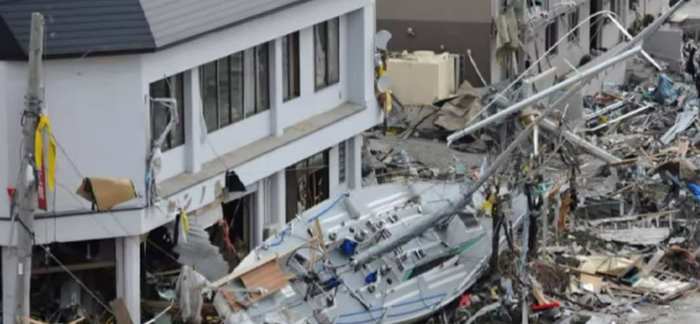People who live on the coast, for people who live on the coast, one of the scariest things that can happen is the tsunami. Thanks to early warning systems, surprise tsunamis are incredibly rare. When an earthquake strikes, emergency broadcast and quickly chart where tsunami wave is headed and clear evacuation routes allow for a fast mobilization of the population out of the danger zone. By knowing the important facts about tsunamis, you can make sure that you stay safe when you are in a danger zone as well.
1. They Move Super Fast
Tsunamis are known to move fast, but many people don’t actually realize how fast they move. A tsunami is able to travel through the ocean at the speed of an average commercial jet. It’s also not the first wave of the tsunami that is the most dangerous. The successive waves that come behind that first wave are the ones that are stronger and bigger than the others. In extreme circumstances, tsunamis may be able to reach heights of over 100 feet. When that happens and the wave is moving at 500 mph, you don’t have much time to react to get to higher ground.
2. Most Tsunamis Happen In One Area
Tsunamis can originate in any body of water. Even when one reads the book of Exodus in the Bible, the description of the Red Sea parting and then closing in on the pursuing Egyptians is a classic example of what a tsunami can do. In today’s world, 80% of the tsunami that are tracked happen within the Pacific Ocean. This is because the area is known as Ring of Fire. Because there is so much volcanic activity in this area, and many of the world’s major faults also run along the chain of volcanoes, tsunamis are quite common because of the geological circumstances.
This means that any nation that either exists within this area borders it is at risk of having a tsunami event. For the United States, this means that the states of California, Oregon, Washington, Alaska, and Hawaii are at the greatest risk receiving a tsunami.
3. Float On
With waters that may be traveling at the speed of commercial flight, it is impossible for the human body to swim against the currents that a tsunami can generate. That is why it is better to grab on object that is floating near you if you are caught in a tsunami then attempt to swim through it. Eventually the waters of the tsunami are going to receive. When they do then you will have the chance to expend your energy in a productive way with the floating object helping you get back to shore.
Tsunami don’t lose any of their power once they’ve been generated. A tsunami that starts strong on one side of the Pacific Ocean is going to be just as strong when it comes to the other side of the Pacific Ocean. The good news is that because we know the depths the water for the tsunami is taking place and GPS allows for exact distances from one place to another, we can accurately determine when a tsunami may be impacting the shoreline.
4. We Are All Japanese
The term tsunami actually comes from a direct translation of the word harbor wave in Japanese. This is a reflection of how prone this island nation is to these devastating waves. They are the only island area, however, that sees regular tsunamis. The state of Hawaii gets one tsunami per year at a severe tsunami once every seven years. In 1946, the coast of Hilo was hit with a 30 foot tsunami that impacted the shoreline at 500 mph.
That has nothing on the 2004 Indian Ocean tsunami that was caused by a massive earthquake. Thanks to the natural power equivalent of 23,000 atomic bombs, the killer tsunami waves impacted the coastline of 11 countries. When all was said and done, the final death toll was over 280,000 people
5. That’s a Biblical Flood
The story of Noah has been part of human culture for generations. It’s found in the Bible today in the book of Genesis and in other holy books and other religions. The story is pretty simple. A great flood wipes out most of the planet. Humanity is at risk and only survives because a group of people are able to build a boat in time live on it until the waters recede.
Scientists have found that this story might have more truth than lower or missed to it. Traces of an asteroid collision have been found that would have generated a tsunami that was so large that it would’ve swept around the planet several times. The only land locations that would’ve been safe would have been mountains that existed at the time. All coastlines would have been dramatically changed by this event and unless life was living on top of these mountains, it would’ve been completely exterminated.
6. Most Tsunamis Don’t Have Drama
The giant waves of the tsunami are generally what cause fear and create great stories. Most tsunamis, thankfully, don’t have these high waves. They instead resemble an extremely high tide that moves in quickly. This results in large amounts of flooding and strong currents, but not huge crashing waves that take out large sections of the shore. The 90 foot waves that Alaska saw in 1964 are more of the exception than the rule when it comes to tsunamis.
7. It Brings Us Together
The world might disagree with each other in a number of things, but it is in our common interest to monitor for tsunamis. Many of the ocean’s waters are covered with sensors that can detect tsunami development while there is still a chance to respond and reach higher ground. It was early warning systems and clear communication, the goal is to never to see the levels of lives lost that happened in 2004 ever again.




